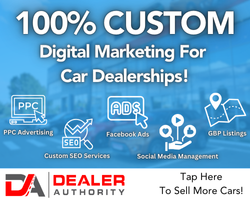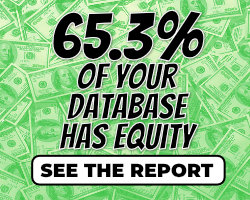Connected data: Everyone wants it. Almost nobody has it.
Consider this: car shoppers typically switch between online and offline four times over the course of their buying journey, and want those switches to be seamless. What’s more, customers interact with dealerships across many different digital touchpoints, which means omnichannel marketing capabilities are essential. And yet, across industries, only 7% of customers are satisfied with the seamlessness of the process.
Connected data is crucial for dealerships too – it allows them to understand the impact of vendor technology and make the most of marketing spend. But there are a number of data breaks that interfere with both the customer experience and effective tracking. Let’s break down these points of disconnect to get a deeper look at some important areas for improvement:
Disconnected Website Data: Poor UX and Missed Leads
Any customer on your website has goals, which means you have opportunities to help them accomplish those goals. Tracking and analyzing customer data, and connecting it across all your conversion tools provides great opportunities for personalized real-time engagements. Disconnected data makes reaching customers harder: the shopper clicking around your service pages gets discount offers on trucks, the shopper browsing truck VDPs sees service offers, the shopper checking out truck VDPs and searching for lease info gets prompted to start financing. A lack of sufficient, or sufficiently-utilized data not only means a lack of personalization for customers– it also means missed leads.
Let’s take it a step further. Let’s say a customer converts on an offer on a VDP. This is a hot lead since they are willing to give you their contact information. In person, you might invite them to start a trade-in or take a test drive. Instead, digital interaction usually ends at this point– and momentum is lost. Why? Because data across engagement and conversion tools is disconnected. Your website can have trade-in, a test drive appointment setter, and 24/7 chat, but if they do not communicate with each other, they can’t work together to move customers down the funnel at moments of high interest. They also damage your user experience: if a customer converts and then does decide to move forward and start their trade-in, for example, they likely need to enter all their information again. If you’ve ever had to explain your problem to six customer service reps, you know how irritating this is.
Disconnected Marketing Data: Unclear ROI, Imprecise Strategy
There are so many moving parts in your digital marketing strategy: ads, on-site engagement and conversions, third-party leads– and actually getting accurate data on each one’s effectiveness can be a huge challenge. For example, you know how many customers clicked your ads, but you might not know what those customers did next, or if they ever turned into sales. You know your number of conversions, but can’t always link them to sales: customers convert and then come in for a test drive without making an appointment, or their spouse comes in you don’t realize that they’re connected to a lead. You know which customers converted on a third-party site, but not whether they interacted with your brand leading up to or following that conversion. And then there are the many shoppers who find you online, don’t convert, and then come into your store– so you remain unaware of any influential digital touchpoints.
All these data disconnects point to imprecision in marketing ROI. Which digital campaigns are effective and which aren’t? Which are influencing customers in early stages, which are sealing the deal, and which aren’t helping much at all? How many ads resulted in appointments set; what’s the close rate on each ad campaign? Do third-party leads have brand awareness?
Essentially: without connecting all the data in your sales funnel, it can be nearly impossible to really understand where your marketing dollars are going. Guessing which campaigns are successful can be a huge waste of money, not to mention drain on your resources– but gaining precision can ensure your investments are actually paying off.
What Connected Data Could Look Like at Your Dealership
Today’s technology is taking us closer and closer to fully connected data. Machine learning-enabled websites with connected tools can track and analyze customer data in real time, enabling truly personalized digital engagements that keep working to move them down the funnel. Data-connecting platforms that bring together ad, lead, and site-behavior data, as well as sales data can show you everything from brand awareness to on-site engagement to customer interests, to customers’ complete paths from the first ad click to the sale– so you can calculate your true ROI on ads. This kind of full-funnel visibility allows you to create a strategy that puts your marketing dollars in the right place– instead of spending significant money without being able to tell which campaigns are really working.
Connected data is the secret sauce that enables the seamless, personalized shopping experience customers want and the transparent, actionable sales insight businesses need. With an understanding of where data gets lost, we can start to identify where it can be put to better use for customers’ benefit, and your bottom line.









